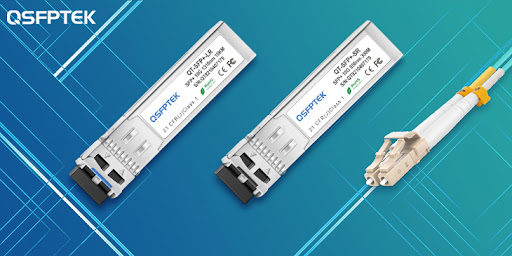Data center is an important infrastructure of modern information network. This research discusses the three-layer structure of data center, focuses on the optical fiber interconnection technology of the communication interconnection subsystem of network equipment in the data center, and points out the development direction of the optical interconnection technology of data center equipment accordingly.
Data Center Structure
The structure of the data center (DC) adheres to the design concepts of network stratification, functional partitioning, server grading, and front-end and back-end network isolation. From the network level and functional area, the network structure in the data center is divided into three layers: core layer, aggregation layer and access layer.
- The access layer consists of functional devices and access switches. Provide access to hosts and servers in the data center, support access control of host ports, have high-density access capabilities, and provide users with network access functions and related network services.
- The aggregation layer is generally composed of switches. Provides policy-based aggregation of each functional partition of the access layer, and centrally implements access control and security control.
- The core layer consists of core routing switches. Usually, the boundary between the L2/L3 layers of the data center is at the aggregation layer, which is the high-speed switching center of the LAN of the entire data center. It is mainly responsible for high-speed processing of data streams, providing high-speed data forwarding between nodes, optimizing transmission links, and realizing secure communication.
Optical Fibers and Cabling Types in the Data Center
The interconnection between network element devices in the data center mostly use multimode fibers. Although the price of multi-mode fiber is more expensive than that of single-mode fiber, the transmission bandwidth is not as high as that of single-mode fiber, and the attenuation is larger than that of single-mode fiber. However, due to the relatively cheap optical transceivers of multi-mode fiber, the indoor multi-mode fiber communication system is more expensive than single-mode fiber. Fiber optic systems have great overall cost advantages. After the release of the new 40/100G Ethernet standard IEEE802.3ba in June 2010, it brought a good start to the application of multimode fiber in data centers [3]. Multimode fiber has the earliest types of OM1 and OM2. After optimization by VCSEL laser, OM3 and OM4 have been developed, and now it has developed to the OM5 stage. From OM1 to OM5, not only attenuation and dispersion are optimized, but the bandwidth is also gradually upgraded. In particular, OM5 fiber has high bandwidth performance in the optical wavelength range of 850-950 nm, which is the best way to realize wavelength division multiplexing transmission in future data centers. the best transmission medium. The transmission distance and maximum channel attenuation requirements of 10G, 40G, and 100G rate multimode fiber networks are shown in the following table.
| Transport Protocol | Fiber Type | Max Distance/m | Max Attenuation/dB |
| 10GBASE-SR | OM3 | 300 | 2.6 |
| 10GBASE-SR | OM4 | 400 | 2.6 |
| 40GBASE-SR4 | OM3 | 100 | 1.9 |
| 40GBASE-SR4 | OM4 | 150 | 1.5 |
| 100GBASE-SR4 | OM3 | 70 | 1.9 |
| 100GBASE-SR4 | OM4 | 100 | 1.5 |
- For the 10G rate optical link in the data center, it can be solved by using a pair of (two-core) fiber jumpers and a single-wavelength 10G transceiver module (such as SPF+ modules) or using a 10G active optical cable (AOC).
- For the 40G rate optical link, the IEEE802.3ba standard 40GBase-SR4 network adopts 8-core OM4 optical fiber to receive 4 and transmit in parallel, and the longest bidirectional transmission distance does not exceed 150 m.
- For the 100G rate optical link, according to the 100GBase-SR4 protocol, 8-core OM4 fiber can be used for 4 receiving and 4 sending in parallel, and the longest bidirectional transmission distance does not exceed 100m.

